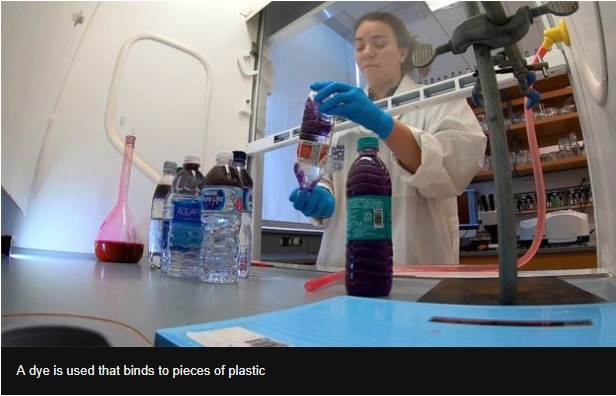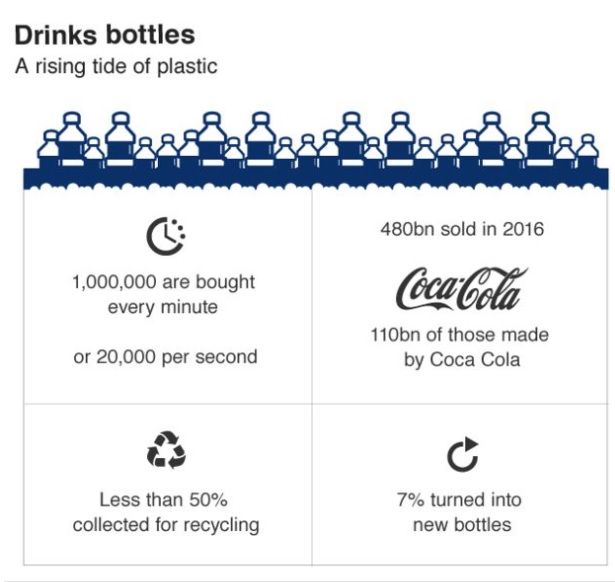
The World Health Organization is to launch a review into the potential risks of plastic in drinking water.
It will assess the latest research into the spread and impact of so-called microplastics - particles that are small enough to be ingested.
It comes after journalism organisation Orb Media found plastic particles in many major brands of bottled water.
There is no evidence that microplastics can undermine human health but the WHO wants to assess the state of knowledge.

The tests were carried out at the State University of New York in Fredonia as part of a project involving original research and reporting by the US-based journalism organisation Orb Media.
Using a dye called Nile Red, which binds to free floating pieces of plastic, the university's Prof Sherri Mason found an average of 10 plastic particles per litre of water, each larger than the size of a human hair.
Smaller particles assumed to be plastic but not positively identified were found as well - an average of 314 per litre.

Of all the bottles tested, 17 were found to have no particles at all while many had counts ranging into the hundreds or even thousands, with big differences within brands and even the same pack of bottles.
We contacted the companies behind the brands and most responded, standing by the quality and safety of their products.
A few questioned why the study’s results were so much higher than their own internal research or pointed out that there are no regulations on microplastics or agreed methods for testing for them.
The study comes on top of earlier investigations that have found microplastics in tap water, beer, sea salt and fish, and Prof Mason told me that researchers need to be able to answer the pressing question of whether microplastics can be harmful.
"What we do know is that some of these particles are big enough that, once ingested, they are probably excreted but along the way they can release chemicals that cause known human health impacts.
"Some of these particles are so incredibly small that they can actually make their way across the gastro-intestinal tract, across the lining and be carried throughout the body, and we don’t know the implications of what that means on our various organs and tissues."


